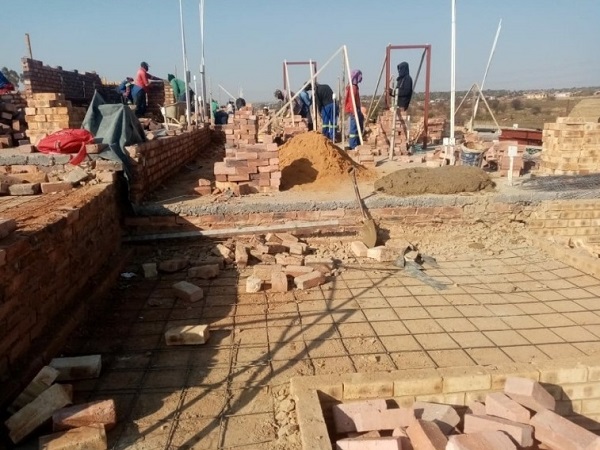According to recent statistics, one in five worker deaths are directly related to the construction industry, and many of those deaths are due to debris on the site and disorganization. In addition, job costs rise when construction sites are not organized. That means taking steps to create a safe, organized work environment should be at the top of every project manager’s to-do list.
There are five steps any contractor can take now to minimize the chances of on-site accidents and losses due to disorganized worksites.
1. Create a comprehensive plan focusing on productivity and safety
Far too many contractors don’t plan adequately, which means timelines and material deliveries are not considered. That results in materials and equipment cluttering a site when they are not needed until later. It’s also common to see sites with little to no storage available for tools, equipment, and materials.
In many instances, the most appropriate Wall Mounted Work Platform is not selected or installed properly.
2. Have a written safety plan in place
Saying safety is important, but it’s not enough. Every site should have a project-specific safety plan designed to account for the on-site conditions. The plan must consider workers, subcontractors, site visitors, and the general public
On-site hazards, timelines, worker safety, and other potential safety issues must be included. Since each project will vary, every plan must be individualized to meet the current project’s expected needs.
3. Communication
Communication between project managers, contractors, workers, and any site visitors must always be clear and concise. The odds of accidents and other issues arising increase dramatically when everyone isn’t on the same page. While developing proper communication channels and using them takes time, clear communications always save money in the long run.
Accidents are reduced, tasks are completed in the appropriate order, and duplicated labor is minimized.
4. Maintain a safe traffic flow
Construction sites are frequently constricted, with little extra space available. That means it’s crucial to create and maintain traffic patterns that actually work. Even sites with extra room should always have clearly discernible routes for traffic of all types and well-defined storage areas for materials and equipment.
As a project progresses, it’s often necessary to alter the traffic flow to accommodate different equipment and deliveries. When changes are needed, make sure everyone on the site is aware of those changes.
5. Take advantage of ongoing training for all staff members
Different projects often include unique situations that mandate additional training for workers. Take the time to make sure every employee involved is aware of the unique characteristics of the project and how they will be involved. The training may involve anything from a short briefing to a comprehensive off-site training session.
Using specialty tools, scaffolding or other work platforms, and customized materials are all potential training subjects that will prevent injuries and material waste while, at the same time, minimize the potential for completion delays.
It’s common for a specific project’s clutter and safety issues to change as conditions evolve. For example, unanticipated weather issues frequently require contractors to alter their plans during the project. Equipment issues may also be challenging, as alternatives might have to be adapted to keep the project on track and avoid significant delays.
However, staying organized and avoiding creating clutter will always be top priorities. Working with vendors that are able to deliver appropriate work platforms and related equipment will always be a necessity.



